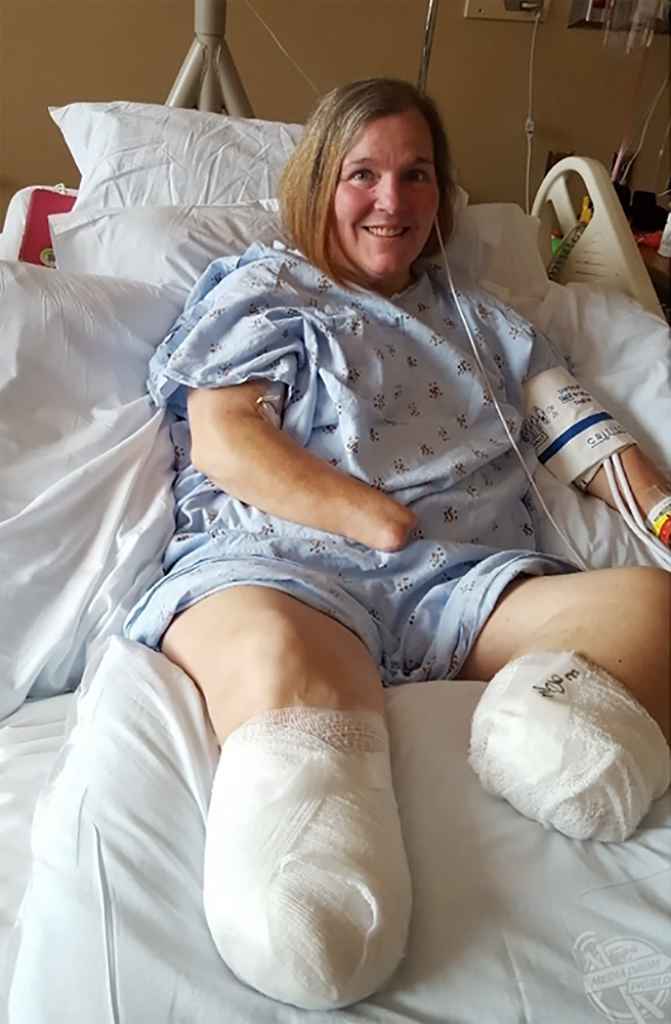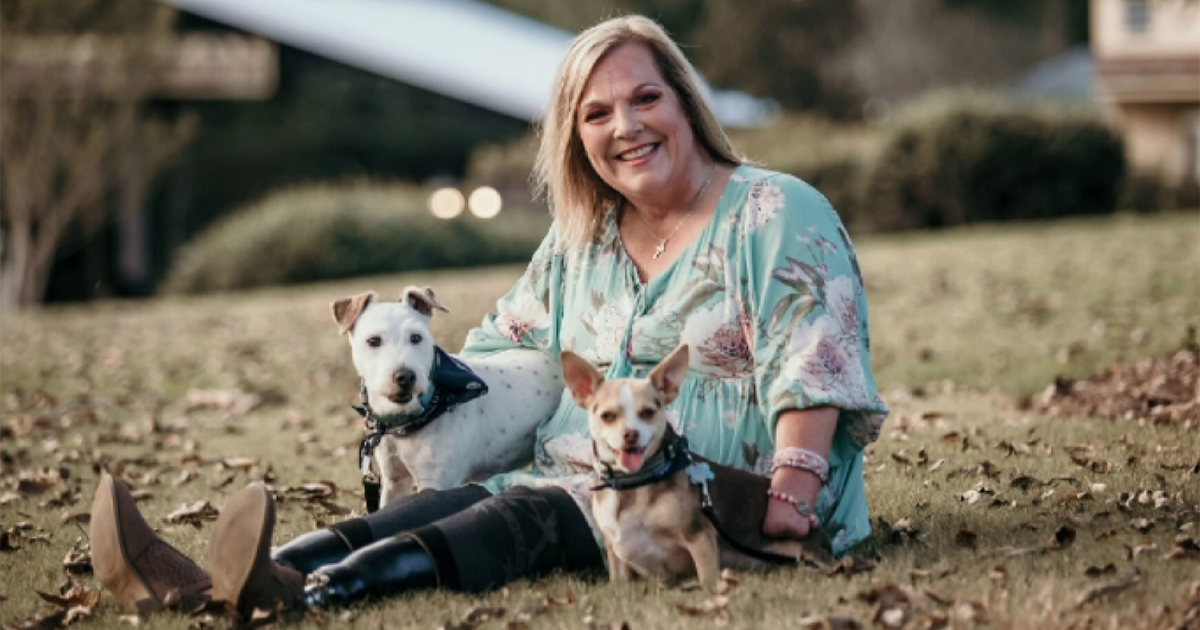Understanding Acute Myeloid Leukemia
- A quadruple amputee is facing yet another health crisis this time, it is acute myeloid leukemia but she is determined to fight once again.
- AML is a cancer that affects bone marrow the spongy tissue inside of your bones. It is a rare cancer overall, but it is the most common type of leukemia in adults.
- Common symptoms of AML include, but are not limited to, fever, frequent infections, feeling tired or weak, easy bruising or bleeding, weight loss or loss of appetite, dull or sharp bone pain, and pale skin.
Kim Steele, of Georgia, woke up from a coma in 2016 to find that her hands and feet were gone. She had experienced a toxic reaction to a medication she started in May of that year; it caused her limbs to turn black, and she quickly developed sepsis a potentially life-threatening condition that occurs when the body's response to an infection damages its own tissues.
Read More"I was devastated," she said. "I cried every day. It was awful."

But she did not give up; she was suffering from depression until she entered an inpatient rehabilitation program.
"That's when I decided I was going to fight for my life, and I fought so hard," she said. "They taught me how to do everything that I needed to know. And I walked out of there when I left."
While Steele is now living independently, and thriving, she has just been hit with another life-altering health crisis: acute myeloid leukemia.
Kim's Cancer Diagnosis
Being a quadruple amputee has allowed Steele to really focus on her health and listen to her body's needs. So, when she began to feel "off" a few months ago, she decided to see her doctor, just in case.
Thankfully she did because she was diagnosed with early-stage acute myeloid leukemia. And she is ready to fight once again. She also said she credits what she went through as an amputee with being able to detect her cancer quickly.
"They said because we caught it early and were on top of it, that I am going to be OK," she told the Atlanta television station. "And I know I will be no matter what I am faced with."
Steele started treatment on Feb. 3, according to Newsweek, and said she is "confident" she will beat this disease.
Understanding Acute Myeloid Leukemia
Acute myeloid leukemia, also known as AML, is a cancer that affects bone marrow the spongy tissue inside of your bones. It is a rare cancer overall, but it is the most common type of leukemia in adults, like Steele. Children rarely get AML.
"To understand acute myeloid leukemia, you have to understand how the bone marrow works," Dr. Mikkael Sekeres, former director of the Leukemia Program at Cleveland Clinic Cancer Center and current chief of the Division of Hematology at University of Miami Health System, previously told SurvivorNet. "The bone marrow is the factory that makes all of the cells that wind up in our blood stream."
What is Acute Myeloid Leukemia (AML)?
This so-called factory makes red blood cells that bring oxygen to our tissues, white blood cells that make up the immune system, as well as platelets, which help stop bleeding, Dr. Sekeres explained. All of these cells perform essential functions in the body, and a spike or decline in any of them can lead to some serious health issues.
"When a person has cancer of the bone marrow, such as acute myeloid leukemia or myelodysplastic syndromes, that factory gets broken. These are cancers," he said. "Cancers grow, and they grow in an uncontrollable way."
Dr. Sekeres pointed out that the way blood cancer grows is different from the way other, solid-tumor cancers grow. With breast cancer, for example, someone may develop a lump or a tumor that grows overtime. With AML, as cancer grows in a confined space (the bone marrow), the normal cells in this space that would be making the red blood cells, white blood cells and platelets, begin dying off. This leads to the bone marrow being filled with cancer cells.
How to Recognize Symptoms of Acute Myeloid Leukemia
There are many symptoms of AML, including:
AML symptoms include:
- Fever
- Frequent infections
- Feeling tired or weak
- Easy bruising or bleeding
- Petechiae, which are blood spots under the skin
- Weight loss or loss of appetite
- Dull or sharp bone pain, usually in the legs and arms
- Pale skin
If you are experiencing any of these symptoms (and are at an increased risk of developing AML), talk to your doctor.
Risk factors that put a person at an increased risk of developing AML include:
- If you are 65 years of age or older: The risk rises as you age.
- If you are male: Men are more likely to get AML than women.
- If you have been treated for cancer in the past: If you have had certain chemotherapy or radiation treatments, they might increase your risk of getting AML.
- If you have had certain exposures: Radiation or chemicals like benzene and formaldehyde might increase your risk.
- If you smoke, or have smoked in the past: Cigarette smoking has been linked to AML.
- If you had another blood disorder: Myelodysplasia or myelofibrosis could put you at greater risk.
- If you have certain genetic disorders: Down syndrome and other genetic syndromes affect AML risk.
Contributing: SurvivorNet staff reports
Learn more about SurvivorNet's rigorous medical review process.


